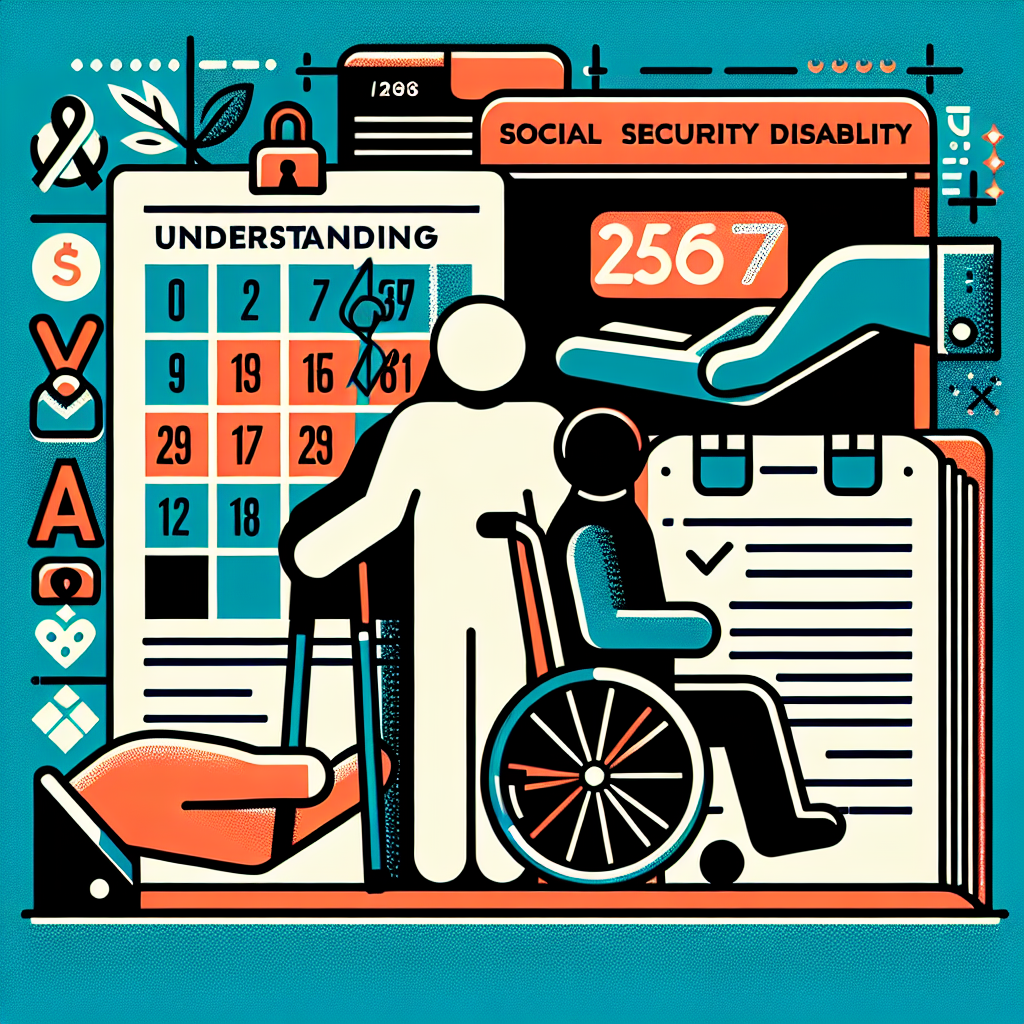Filed under Disability Insurance on
Understanding Date Last Insured for Social Security Disability

Eligibility for Social Security Disability Insurance (SSDI) involves a complex set of requirements, and one critical element is the concept of "Date Last Insured" (DLI). For those seeking disability benefits, understanding Date Last Insured is crucial. Not only does it affect eligibility, but it also influences the approval process. By delving into the intricacies of the SSDI program and clarifying the role of Date Last Insured, potential applicants can prepare more effectively and optimize their chances of success.
What Is Date Last Insured?
The Date Last Insured is a pivotal component in the Social Security Disability Insurance framework. It refers to the last date on which a person is eligible to qualify for disability benefits based on their work history and contributions to the Social Security system. Essentially, it marks the end of the period during which one can become disabled and still qualify for SSDI benefits.
How Is DLI Calculated?
Understanding Date Last Insured involves grasping how it is calculated—the calculation hinges on the accumulation of work credits. Individuals earn work credits by paying Social Security taxes through employment or self-employment. Typically, workers can earn up to four credits per year. The general rule is that earning 40 credits qualifies for disability coverage, with 20 credits earned within the last ten years leading up to the date of becoming disabled. This requirement is commonly known as the "20/40 rule."
The Role of Work Credits in SSDI
Earned work credits form the backbone of eligibility for SSDI benefits. The number of credits required varies depending on age at the time of becoming disabled. Here’s a detailed breakdown:
- Before Age 24: Individuals may qualify with only six credits earned in the three years prior to their disability.
- Ages 24 to 31: The rule states that credits equal to half the time between age 21 and the onset of disability are needed.
- Age 31 and Older: At least 20 credits must be earned in the ten-year period preceding the disability, along with a total of up to 40 credits depending on age.
Maximizing Work Credits
Maintaining consistent employment is key to accumulating the necessary work credits. Strategic career planning and understanding how these credits build eligibility for SSDI is beneficial. Individuals should track their progress annually through the Social Security Administration’s website to ensure they remain on target.
Navigating the Claims Process
Applicants for SSDI must demonstrate that their disability occurred while they were still "insured," meaning before their Date Last Insured. The claims process involves several steps:
- Initial Application: Compiling medical records, employment history, and financial documentation is essential when applying.
- Review: A thorough examination of the claim is conducted, verifying documents and confirming disabilities align with SSDI qualifications.
- Decision: An approval or denial letter is issued, with options for appeal if necessary.
Expert Opinions on DLI
Experts emphasize that awareness of one's Date Last Insured is crucial for a smooth application. Claimants should be proactive in understanding their work credit status and make efforts to gather exhaustive medical documentation to support their claims.
Why Understanding Date Last Insured Matters
The Date Last Insured plays a decisive role in eligibility. Failing to meet this deadline could mean disqualification for benefits despite a legitimate disability. Emphasizing the importance of being cognizant of one's insured status ensures better chances of obtaining the necessary support.
Common Pitfalls and Solutions
Many applicants encounter similar challenges when navigating the SSDI process. Being aware of these common pitfalls can help prospective claimants avoid costly mistakes:
- Waiting Too Long: Delaying the application can lead to missing the Date Last Insured. Early preparation and submission are advisable.
- Incomplete Records: Comprehensive documentation, including medical evaluations and employment records, strengthens applications.
- Ignoring Professional Advice: Consulting with a disability attorney or advocate can clarify regulations and enhance application effectiveness.
Impact of DLI on Different Age Groups
Understanding Date Last Insured becomes even more critical for individuals who have been out of the workforce for extended periods or those facing age-related changes. For younger workers, ensuring they build credits early in their careers is vital. On the other hand, older workers should focus on maintaining a robust work record until retirement.
Planning for Future Needs
Proactive planning and continuous contribution to Social Security not only solidify eligibility for SSDI but also prepare individuals for various future financial needs, including retirement. By understanding DLI, workers can ensure longer-term economic stability.
Conclusion
Understanding Date Last Insured is foundational for anyone considering applying for Social Security Disability benefits. It affects eligibility and determines the window of opportunity for submitting successful claims. By remaining informed and proactive, potential applicants can navigate the SSDI process with confidence. Building and maintaining the necessary work credits, recognizing the importance of timely applications, and seeking expert guidance are keys to achieving successful outcomes.



